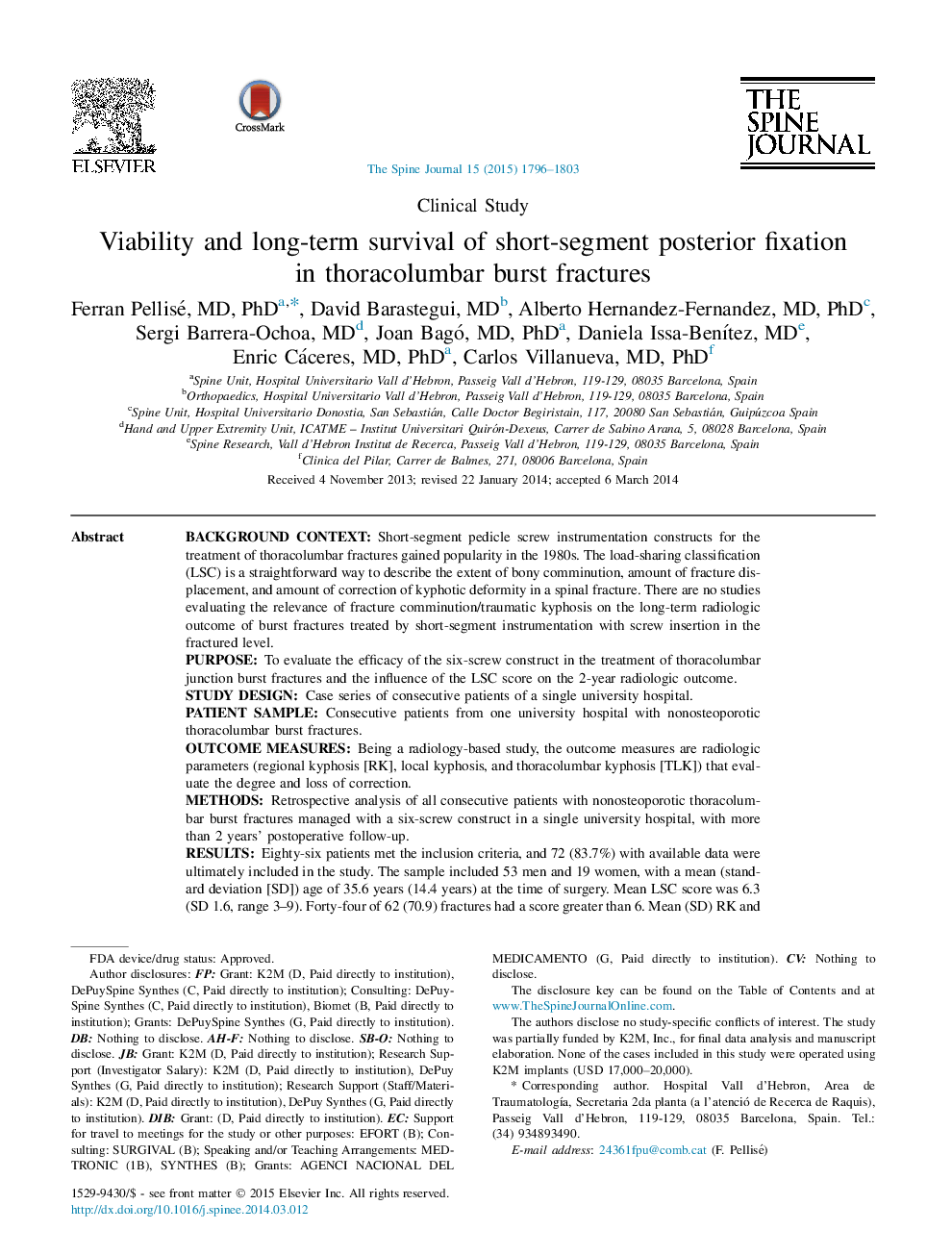| کد مقاله | کد نشریه | سال انتشار | مقاله انگلیسی | نسخه تمام متن |
|---|---|---|---|---|
| 6212462 | 1268580 | 2015 | 8 صفحه PDF | دانلود رایگان |
Background contextShort-segment pedicle screw instrumentation constructs for the treatment of thoracolumbar fractures gained popularity in the 1980s. The load-sharing classification (LSC) is a straightforward way to describe the extent of bony comminution, amount of fracture displacement, and amount of correction of kyphotic deformity in a spinal fracture. There are no studies evaluating the relevance of fracture comminution/traumatic kyphosis on the long-term radiologic outcome of burst fractures treated by short-segment instrumentation with screw insertion in the fractured level.PurposeTo evaluate the efficacy of the six-screw construct in the treatment of thoracolumbar junction burst fractures and the influence of the LSC score on the 2-year radiologic outcome.Study designCase series of consecutive patients of a single university hospital.Patient sampleConsecutive patients from one university hospital with nonosteoporotic thoracolumbar burst fractures.Outcome measuresBeing a radiology-based study, the outcome measures are radiologic parameters (regional kyphosis [RK], local kyphosis, and thoracolumbar kyphosis [TLK]) that evaluate the degree and loss of correction.MethodsRetrospective analysis of all consecutive patients with nonosteoporotic thoracolumbar burst fractures managed with a six-screw construct in a single university hospital, with more than 2 years' postoperative follow-up.ResultsEighty-six patients met the inclusion criteria, and 72 (83.7%) with available data were ultimately included in the study. The sample included 53 men and 19 women, with a mean (standard deviation [SD]) age of 35.6 years (14.4 years) at the time of surgery. Mean LSC score was 6.3 (SD 1.6, range 3-9). Forty-four of 62 (70.9) fractures had a score greater than 6. Mean (SD) RK and TLK deteriorated significantly during the first 6 months of follow-up: 2.90° (4.54°) p=.005 and 2.78° (6.45°) p=.069, respectively. Surgical correction correlated significantly (r=0.521, p<.0001) with the time elapsed until surgery. Loss of surgical correction (postoperative to 6-month RK and TLK increase) correlated significantly with the LSC score (r=0.57, p=.004; r=0.51, p=.022, respectively). Further surgery because of correction loss was not required in any case.ConclusionsThe six-screw construct is effective for treating thoracolumbar junction burst fractures. The medium-to-long-term loss of correction is affected by the amount of bony comminution of the fracture, objectified through the LSC score.
Journal: The Spine Journal - Volume 15, Issue 8, 1 August 2015, Pages 1796-1803
